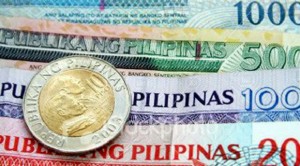
This development was brought on by the US Federal Reserve’s decision to reduce its asset purchases for the second consecutive month amid signs of continuing recovery of the world’s largest economy.
Data from the Bangko Sentral ng Pilipinas (BSP) showed a net outflow of foreign portfolio investments, or “hot money,” amounting to $361.1 million in February. In January, there was a net outflow of $1.84 billion, while in December, the outflow amounted to $354.33 million.
The outflow for the month brought the year-to-date total net outflow to $2.205 billion—worse than the net inflow of $1.49 billion at the end of the same week last year.
The central bank attributed the flight in foreign capital to investors’ “reaction to the tapering of the quantitative easing program in the United States starting January of this year.”
Registered investments for February reached $1.5 billion, declining by nearly a third, or 29.6 percent year-on-year.
The bulk of these investments, or 88.3 percent, went to publicly listed shares, with holding firms, banks, and property companies as the main beneficiaries.
Outflows for the month were virtually flat at $1.85 billion from $1.91 billion in February of last year. The outflows in January were more than enough to offset the money that came in.
The United States, Singapore, Luxemburg, and Malaysia were the main sources of investments for the month, accounting for 77.7 percent of the inflows. The US was the main destination of outflows, receiving 92.2 percent of the total.
The BSP expects the country to end the year with $2.1 billion in net inflows of hot money.
February marked the second month that the US Federal Reserve reduced its bond-buying program to $65 billion a month, from the original $85 billion.